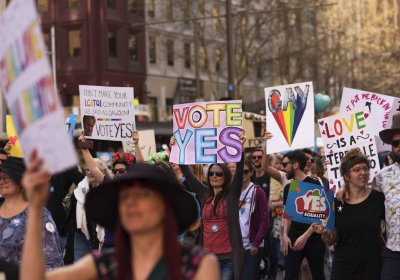If there is one thing I have learnt from being involved in this campaign over the past decade, it is that seeing people protesting, known that someone cares about you and is watching, has always made a difference to people suffering in detention.
Zebedee Parkes
“This place is like a war zone,” wrote Behrouz Boochani, an Iranian journalist locked up in the Manus Island detention centre, as he exhaustedly began to describe the situation on November 2 – day 2 of the “Manus Island siege”.
Since October 31, 600 desperate men, suffering in more ways than most people can comprehend after more than four years of torture in detention, have barricaded themselves in the centre.
Immigration minister Peter Dutton’s citizenship bill amendments lapsed on October 18. It is not the first time Dutton has failed to pass new laws relating to immigration, visas and citizenship and is another illustration of the growing discontent with some of the government’s far-reaching, Trump-like, proposals about immigration law.
It was opposed in the Senate by Labor, the Greens and the Nick Xenophon Team. They also combined to deny Dutton an extension to October 20. In the end, with the numbers against it, the Bill never even made it to the floor.
Protests are continuing in Manus Island detention centre as refugees resist the Australian government's plans to move them to the East Lorengau Refugee Transit Centre. Two refugees have died since August and numerous others have been attacked by locals in East Lorengau.
After more than four years of systemic torture, six deaths and the Papua New Guinea Supreme court ruling its presence unconstitutional, Manus Island detention centre and the fate of the several hundred men in it, is coming to a head.
The Australian government is ramping up its efforts to close the centre by the end of October, demolishing the centre around the several hundred men it is leaving stranded on Manus Island.
The several hundred men on Manus Island, still detained after more than four years, scattered red petals over pictures of Rajeev Rajendran on the evening of October 2.
A hand-drawn banner, illuminated by flickering candles, spelled out the mood of the memorial.
Below a picture of Rajendran the men wrote: “R.I.P. We are all in the queue. How many more you want to kill?”
The men in Manus Island detention began their 59th day of protest on September 29, days after a handful of their friends left for the US. They held their tired arms above their heads in a cross, a gesture that has become symbolic of refugee protests in detention.
About 25 of the several hundred men on Manus Island have being offered settlement in the US.
About 8000 people turned up to state parliament on September 16 for the largest marriage equality rights protest here ever.
30,000 people came out to say Yes to marriage equality at a rally in Sydney on September 10.
When Australia began forcibly moving people out of Manus Island detention centre to East Lorengau and Port Moresby in August, peaceful protests were launched in the detention centre.
When Australia cut off the power and water, people continued to defiantly protest.
When a detainee, Hamed, was found dead, his body beaten and hung from a tree near the East Lorengau transit centre, a vigil was held for him and the protests continued.
Federal immigration minister Peter Dutton has come up with a new act of cruelty against asylum seekers: he is trying to force people now in Australia back to danger in Nauru and Manus Island.
Dutton has invented a new class of visa — the final departure bridging E-visa — which cuts income support from asylum seekers already living in the community. They have been given six months to arrange to either go back to their home countries or be sent back to offshore detention.
Hamed Shamshiripour, a 31 year old Iranian refugee, died on August 7 as a direct result of Australia’s detention system. He is the sixth man to die on Manus Island since the detention centre was opened in 2012, according to Monash University’s Australian Border Deaths database.
- Previous page
- Page 11
- Next page











